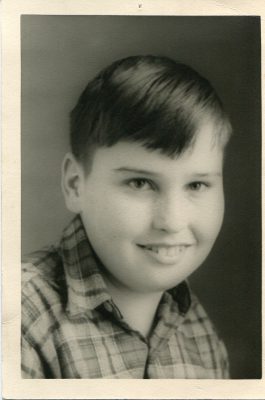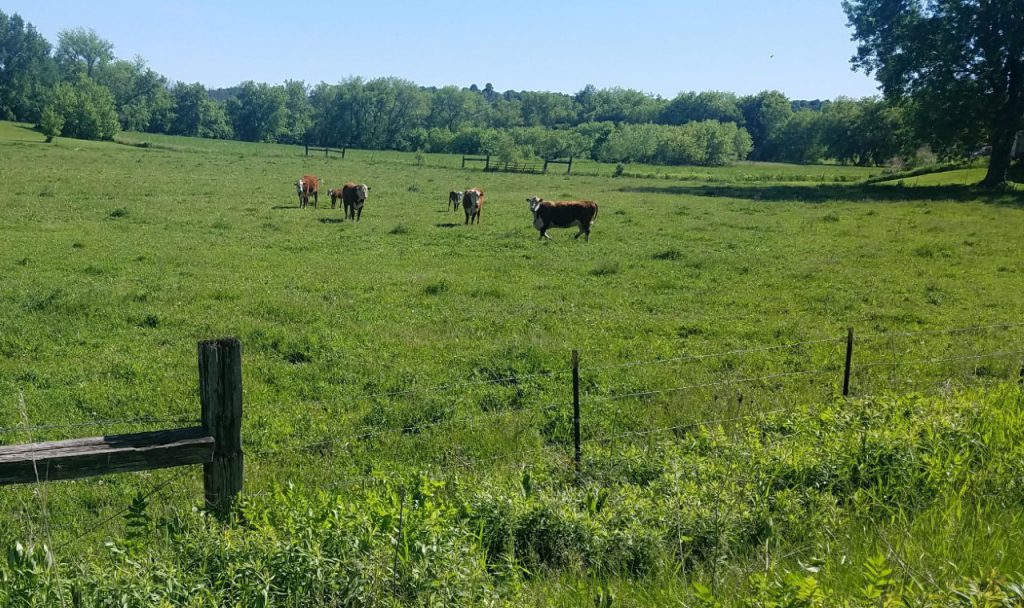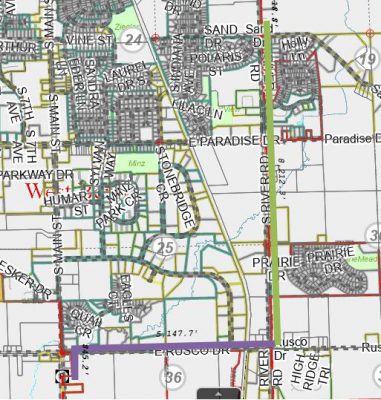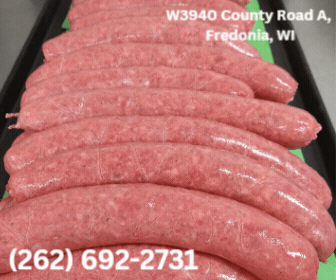June 11, 2021 – Town of West Bend, Wi – Dave Bohn was born just a few months after the stock market crash; he grew up during the Great Depression in the 1930’s on a farm just south of West Bend on Highway P. In addition to having dairy cows and growing grain, his parents raised chickens, sold eggs, and for a few years, raised beef cattle. Here’s a story Dave wrote about an old-fashioned cattle drive they held back in the day.

In the early 1940’s, my dad bought some land on the northeast corner of Rusco Drive and Highway G in the town of West Bend. During that time, some of the land was grown over with small trees and brush. Part of this land, maybe 6 to 8 acres, was cleared of the trees and brush by us when we were kids and used for crops.
Another portion of the land was used for pasture. But part of that land had many springs in it, so it was too wet to crop, as it still is today. So, my dad worked a portion of the 30 acres and the rest was left alone. Today, about half of that land is used for crops.
For a few years when I was about 10-12 years old, my dad raised steers. He didn’t always raise steers but during those years, he had about 12 of them. He bought the young steers from Carl Schneiss, who was a cattle dealer in the West Bend area. Carl sold milk cows, steers, some bulls, and pretty much whatever a farmer would need. I think dad bought the cattle at about 300 pounds and we would raise them for about a year and a half until they were about 1,100 – 1,200 pounds. At that time, dad would sell them for beef. Usually, one of the local butcher shops would buy them.

They were Herefords, red colored with white faces. One particular year, dad decided we should use the pasture on this land for the grazing of these steers for the summer. The steers overwintered in our barn and when spring arrived, we decided to do an “Old West” cattle drive to get the steers to the summer pasture.

My brother Tom recalls he led the drive on our big draft horse named Jim. Tom said he didn’t know how to steer Jim, but Jim just seemed to know the way. My dad and I walked behind to guide the herd on its way to their summer home, located about a mile east of our farm.

We did have a dog to help. I think it was our favorite dog, Skippy. Since our home pasture was at the bottom of the hill, on Hwy P near Rusco Drive (adjacent to where the electrical substation is now) and the summer pasture was on Rusco Drive and Hwy G, we used Rusco Drive to get the cattle to their new pasture. There wasn’t much traffic then, so it wasn’t too much of a problem, but I’m sure it was a sight nonetheless – my brother Tom on our big draft horse with all these cattle walking down the road, and my dad, Skippy and I following behind.
Things went well getting them to their new home for the summer and went fine most of the summer until one day towards fall, the herd broke out of the fence around this pasture. They didn’t get very far so we were able to get them all back quite soon after their jailbreak. However, this one steer would not go back in. It just got wild and took off running through the field. We couldn’t even get close to it. Every time we tried to get close, it took off. It lost all reason and broke through other farmers’ fences, running wild.
We finally corralled it in a farmer’s yard on Hwy G, across from where East High School is today. This farm had a real strong fence in their cow yard and somehow, we got this steer into the yard. The steer was just violent though. It made a mad rush headlong into the fence, which was a strong woven wire fence that luckily held and didn’t break through.
It was something that this fence held a charging 400-pound steer. And we were lucky no one got hurt. We knew that being gored by a steer was a real possibility because our Uncle John was gored by a bull when he was about 14 years old, which was about the age we were during this time. He survived the goring but suffered injuries and lifelong health problems.
We had to get the rope around the steer’s neck, which somehow, we finally managed. Then we took the tractor down to the farm on Hwy G, near Decorah Road, and fastened the rope to the steer and the tractor. Persuaded by the tractor pulling him, the steer finally got tired out and was pulled by the tractor along the roadside back to our farm.
By the time we got it home, it had calmed down and we were able to get it into our barn. We kept it in the barn a couple of days to keep it calm and then we let it out, but only in our barnyard. We never did take that steer back to the pasture where the rest of the herd still was. Even after this episode, that steer always remained a little bit of a problem and was always real hyper. This was the only steer we had that was that way though.
As it was getting towards fall, we had to do another cattle drive, in order to get the steers from the summer pasture back to our yard by the barn for winter. That cattle drive went without any complications. This was the only time we ever put animals on that land to graze. We thought it was a good idea at the time, but it didn’t work out that way and just created more work for my dad and us.
Click HERE to read more stories by Dave Bohn including recollections of the corner grocery and the train trip to Chicago.









